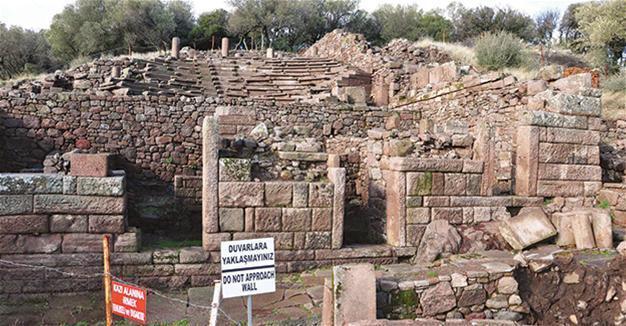Aigai artifacts on display at Louvre
MANİSA – Doğan News Agency
 Artifacts that were unearthed in 1882 by French researcher Michel Armand Clerc in the ancient city of Aigai in the western province of Manisa are currently being displayed at Paris’ Louvre Museum.
Artifacts that were unearthed in 1882 by French researcher Michel Armand Clerc in the ancient city of Aigai in the western province of Manisa are currently being displayed at Paris’ Louvre Museum. The head of the excavations in the ancient city and an academic at Manisa Celal Bayar University Archaeology Department, Assistant Professor Yusuf Sezgin, said the ancient city drew the interest of academic circles even 135 years ago.
Aigai, one of the cities established by the Aiol people in western Anatolia, has a history of 2,800 years in Manisa’s Yunusemre district.
Stating that as interest in the ancient Hellenic world increased at the end of 19th century and big museums began to be established, Sezgin said researchers competed against each other to gather artifacts.
“Aigai was also affected by this situation, too. At the beginning of the 1880s, the first French researchers and then the Germans began struggling to work in Aigai. French archaeologists were irritated that the Germans had interest in Aigai. In the letters they sent to their institutions, they stated that the Germans had more developed tools like cameras and that they were behind them. We know that the artifacts that were unearthed during short-term examinations that were carried out in this period were taken to the Louvre Museum. This was realized with the permission of the Ottoman state and shows us that the academic world had an interest in Aigai even 135 years ago,” he said.
One 12 Ionian cities
Aigai, which dates back to the eighth century B.C. and was one of the 12 Ionian cities mentioned by Herodotus, is sometimes known as “Nemrut Castle.” The city was a significant center of trade in the Hellenistic era.
Excavations have so far unearthed the city’s walls, three-story agora, an assembly building, a stadium, theater and the Temple of Demeter.
One of the recent findings in the ancient city was a sarcophagus. It was revealed to have belonged to the administrator of a school after its pieces were reunited.
















